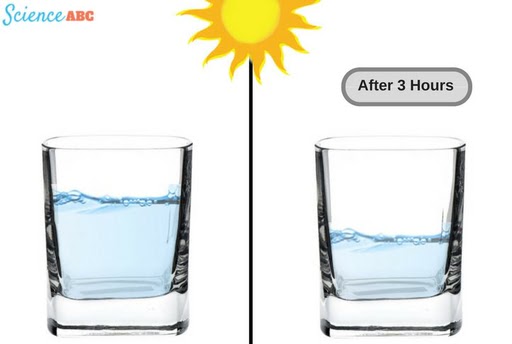The water actually does evaporate AND seep into the ground. In the former case, the rate is very slow and water gets replenished, while in the latter, the ground beneath becomes saturated after a certain point.
You probably remember something called ‘evaporation’ from your high school science class. To put it simply, evaporation is when a liquid turns into a gas due to a change in its temperature and/or pressure. There are many examples of evaporation in everyday life; wet clothes will dry in the sun, soaked ground dries up after a while, and wet hair loses its moisture in the sunshine quickly.
All of these examples show that water evaporates if left in the sun for too long, so why doesn’t the water in lakes evaporate?
Why Don’t Lakes Evaporate?
As mentioned earlier, water evaporates when exposed to heat. Since the sun is a natural, readily available, and consistent source of heat on the planet, why doesn’t it cause lakes to evaporate, or at least significantly reduce the water levels?
Here’s a simple experiment to explain this phenomenon: fill a glass with water up to the brim and keep it in the sun. After a few hours, you’ll notice that the water level has decreased.

As you might have already guessed, this happens because of the heat from the sun. The same thing happens with large bodies of water, and water does evaporate from them. However, we hardly notice any difference in the water level of lakes.
There are two main reasons for this: first, the amount of water present in lakes and large bodies of water is huge (compared to what you might have in a beaker or tub). Therefore, the process of evaporation is quite slow, which is why we don’t see a noticeable difference in their water levels.
That being said, in theory, lakes and ponds should (and do) dry up after a certain period, ranging from a few weeks to a few months, depending on their size. Fortunately, this doesn’t happen too often, thanks to the water cycle!
 The Water Cycle
The Water Cycle
You most likely learned about the water cycle multiple times in high school. Also known as the hydrological cycle, it’s the process by which water first evaporates from lakes, rivers, and oceans, rises through the atmosphere, and then returns to the surface as precipitation (such as rain, snow, hail, etc.).
This means that the water lost from ponds and lakes through evaporation is naturally replenished through rain and other water sources. There are various methods (such as recharging through rivers, streams, constructing dams, etc.) through which lakes can be replenished, ensuring that they don’t just disappear! However, there are many freshwater bodies that do dry up over time if the rate of replenishment is significantly imbalanced.
Why Doesn’t The Water Penetrate The Ground?
It is evident that the water level of a lake cannot significantly decrease due to evaporation, but what prevents it from penetrating the ground instead? Why doesn’t it simply do that?
Well, it does happen, but there’s a catch…
You see, the ability of water to seep into the ground depends on the type of soil beneath the lake. If the lake is too deep, it usually contains impermeable clay or rocks at the bottom, which means that water cannot penetrate through. Additionally, soil also has a “saturation limit”. We use the term “saturated” to describe something that is unable to absorb or hold any more of a certain substance. For instance…

As there is a continuous supply of water from above, the ground beneath lakes becomes saturated with water to the point where it can no longer absorb any more water. It is important to note that different types of soils have different “filtration rates”. The larger the soil particle, the greater the seepage (similar to sand). Moreover, since many natural lakes form in low areas, they actually receive water input from underground sources, which is an additional advantage.
In summary, water does penetrate the ground, but once it reaches a certain limit, the soil at the bottom becomes saturated, preventing any further penetration of water. The water must simply remain there and gradually evaporate – and then be replenished.
To conclude, if a body of water has an ample supply and has mechanisms in place to be regularly refilled, it is unlikely to disappear anytime soon!
